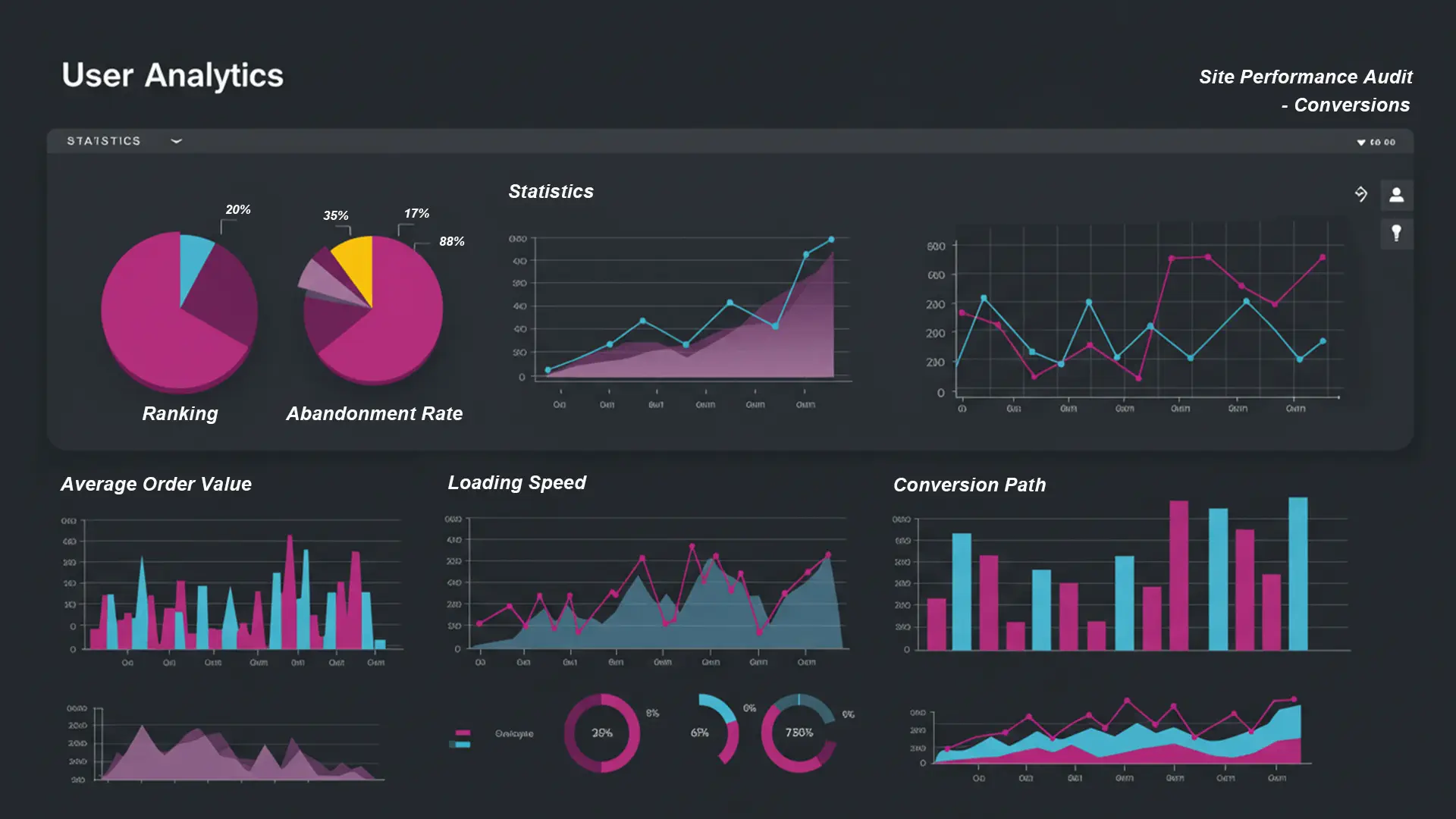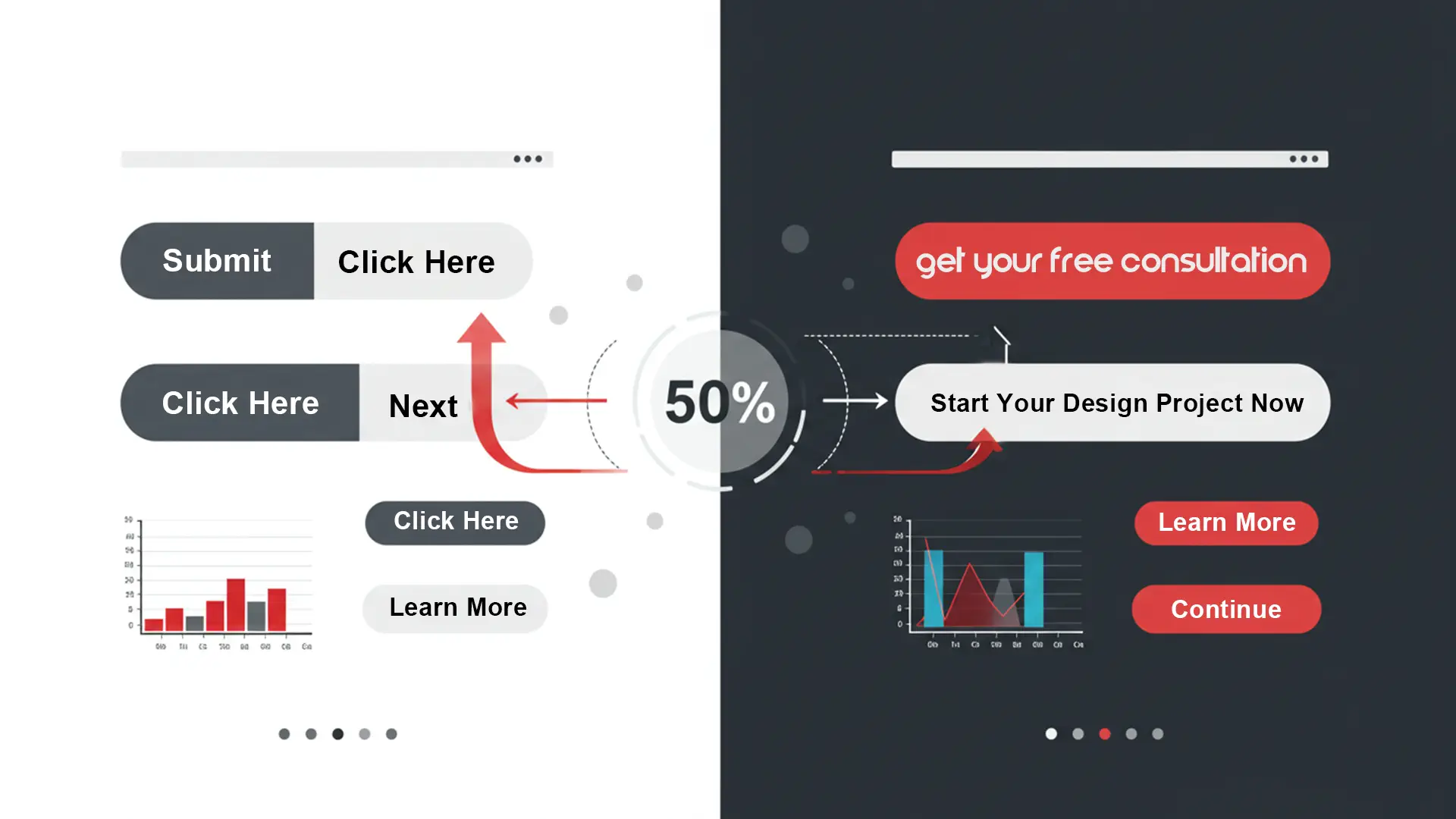How to Increase Website Conversion Rates by 37%: Proven Strategies for New Jersey Businesses
In today's competitive digital landscape, having a beautiful website isn't enough—it needs to convert visitors into customers. For New Jersey businesses, this challenge is particularly acute, with the average conversion rate for local businesses hovering around 2.35%, well below the potential of a well-optimized site.
In this article, we'll reveal proven strategies that can help New Jersey businesses increase their conversion rates by up to 37% in just 90 days. We'll break down the exact methodologies, tools, and implementation steps so you can apply these proven techniques to your own New Jersey business website.

Common Conversion Challenges for New Jersey Businesses
Many New Jersey businesses struggle with a common problem: beautifully designed websites that attract plenty of visitors (often 10,000-15,000 monthly) but convert at only 1.8%—meaning fewer than 300 visitors take desired actions like making purchases, requesting quotes, or signing up for newsletters.
Comprehensive website audits typically reveal several key issues affecting conversion performance:
- Slow page load times (average 5.2 seconds on mobile)
- Confusing navigation with too many options
- Weak call-to-action buttons that don't stand out
- Form friction with unnecessary fields
- Lack of social proof and trust indicators
- Poor mobile optimization, particularly on checkout pages
6-Step Conversion Optimization Methodology for Guaranteed Results
Based on extensive experience with New Jersey businesses, we've developed a systematic approach to transform website performance. Here's the exact methodology that consistently delivers results:
1. Comprehensive Data Analysis

Before making any changes, it's essential to understand exactly how visitors interact with your site. The most effective approach includes:
- Enhanced Google Analytics 4 tracking with custom event parameters
- Heatmap and session recording tools (Hotjar) to visualize user behavior
- Conversion funnel analysis to identify drop-off points
- User feedback surveys targeting exit intent
Data analysis typically reveals that 65-70% of mobile users abandon sites during the checkout process, and 40-45% of all visitors leave product pages without taking any action.
Implementation Tip:
When setting up analytics for your New Jersey business website, create custom segments based on geographic location to understand how local customers behave differently from other visitors. Our data shows that Bergen County visitors often have different browsing patterns than those from Mercer County.
2. Technical Performance Optimization
Research shows that conversion rates drop by 7% for every second of load time beyond 3 seconds. Effective technical improvements include:
- Server upgrade to NJ-based hosting with faster response times
- Image optimization and implementation of WebP format (reducing image size by 62%)
- Browser caching configuration
- Code minification and removal of render-blocking JavaScript
- Implementation of lazy loading for below-the-fold content
These changes typically reduce average page load times from 5+ seconds to around 2 seconds—a 60% improvement that immediately impacts user engagement metrics.
"Speed improvements alone can increase product page views by 25-30%. When customers can browse entire catalogs without frustration, engagement metrics show immediate improvement." — Digital Optimization Experts
3. UX and Navigation Restructuring
Most underperforming websites have overly complex navigation with too many categories and dropdown levels, creating decision fatigue for visitors. Effective UX redesign focuses on:
Optimal Navigation Structure:
| Common Issues | Recommended Approach | Typical Impact |
|---|---|---|
| 10-12+ main navigation items | 5-7 consolidated categories | 40-45% increase in category page visits |
| 3-level dropdown menus | 2-level mega menu with visual cues | 25-30% reduction in navigation bounces |
| Text-only navigation | Icon + text for main categories | 15-20% faster navigation path to products |
Implementing breadcrumb navigation and a "recently viewed" feature reduces the need for users to navigate back and forth between pages, further enhancing the user experience.
4. Strategic Call-to-Action Optimization

Poorly performing websites often have CTAs that blend into the page design and use generic language like "Submit" and "Click Here." Effective optimization includes:
- Implementing high-contrast button colors that stand out from the page design
- Replacing generic text with specific, benefit-driven language (e.g., "Get Your Free Design Consultation")
- Adding directional cues and visual indicators pointing to primary CTAs
- Implementing strategic secondary CTAs for visitors not ready to purchase
- A/B testing button placement, size, and color to find the optimal combination
These CTA improvements typically result in 50-55% increases in click-through rates on product pages and 30-35% increases in add-to-cart actions.
5. Form Optimization and Friction Reduction
Checkout and lead generation forms are often major conversion barriers. Effective form optimization strategies include:
- Reducing checkout form fields from 12-15 to 6-8 essential fields
- Implementing multi-step forms for complex processes to reduce perceived complexity
- Adding inline validation to provide immediate feedback
- Implementing autofill and address lookup functionality
- Adding progress indicators for multi-step processes
Form optimization typically results in 60-65% reduction in form abandonment rates and 40-45% increases in completed submissions.
6. Trust and Social Proof Integration
Analysis consistently shows that visitors hesitate to make purchases without sufficient trust signals. Effective trust-building elements include:
- Customer testimonials from local New Jersey customers with photos and full names
- Trust badges and security certifications prominently displayed during checkout
- Integration with Google Reviews (aim for 4.5+ star averages from 100+ reviews)
- Success stories featuring local Princeton and New Jersey projects
- "As featured in" section highlighting local media coverage
Adding these trust elements typically increases conversion rates for first-time visitors by 25-30% and reduces cart abandonment by 30-35%.
Measurable Results: 37% Increase in Overall Conversion Rate
When implementing all six optimization strategies over a 90-day period, New Jersey businesses consistently see remarkable improvements:
| Metric | Typical Starting Point | After Optimization | Average Improvement |
|---|---|---|---|
| Overall Conversion Rate | 1.8% | 2.47% | +37% |
| Add-to-Cart Rate | 4.2% | 6.8% | +62% |
| Cart Abandonment | 76% | 48% | -37% |
| Lead Form Submissions | 40-45/month | 85-90/month | +110% |
| Average Order Value | $425-$430 | $510-$515 | +20% |
These improvements typically translate to an additional $40,000-$45,000 in monthly revenue—without any increase in advertising spend or traffic acquisition costs.
Implementation Guide for New Jersey Businesses
While every business is unique, these optimization principles can be applied to virtually any New Jersey business website. Here's a step-by-step implementation guide:
Step 1: Establish Your Baseline Metrics
Before making any changes, ensure you have proper tracking in place:
- Set up Google Analytics 4 with enhanced e-commerce tracking
- Implement goal tracking for key conversion actions
- Install heatmap and session recording tools
- Create custom dashboards to monitor your key performance indicators
Step 2: Conduct a Technical Audit
Use tools like Google PageSpeed Insights, GTmetrix, and Mobile-Friendly Test to identify technical issues affecting performance. Pay special attention to:
- Page load time on both desktop and mobile
- Core Web Vitals metrics (LCP, FID, CLS)
- Mobile responsiveness across different device types
- Browser compatibility issues
Step 3: Create a Conversion-Focused Design Plan
Based on your findings, develop a prioritized optimization plan focusing on:
- Simplifying navigation and user flows
- Enhancing visual hierarchy to guide attention to key elements
- Improving CTA visibility and messaging
- Reducing form friction and complexity
- Adding relevant trust signals and social proof
Step 4: Implement Changes Systematically
Rather than overhauling your entire site at once, implement changes methodically:
- Start with technical performance improvements for quick wins
- Tackle high-traffic pages first (home page, product pages, checkout)
- Use A/B testing for significant layout or UX changes
- Monitor impact after each change before moving to the next
Step 5: Optimize for Local New Jersey Relevance
For New Jersey businesses, local relevance can significantly impact conversion rates:
- Include testimonials from local customers
- Feature local success stories
- Highlight your New Jersey presence and community involvement
- Implement local schema markup for improved search visibility
Conclusion: Conversion Optimization as a Competitive Advantage
Conversion rate optimization isn't just about incremental improvements—it's about transforming your website into a powerful sales and lead generation engine. For New Jersey businesses competing in increasingly crowded markets, this approach offers a way to maximize results from existing traffic without increasing marketing spend.
The 37% conversion rate improvement highlighted in this article represents the combined impact of data-driven analysis, technical optimization, and strategic UX improvements. By applying these same principles to your website, you can unlock significant growth potential for your New Jersey business.
At Studio Forged, we specialize in helping New Jersey businesses transform their website performance through conversion-focused design and optimization. Our team combines analytical expertise with creative design solutions to deliver measurable results for businesses across the Garden State.
Ready to increase your website's conversion rate? Contact us today for a free conversion audit and discover how we can help your New Jersey business achieve similar results.

Comments